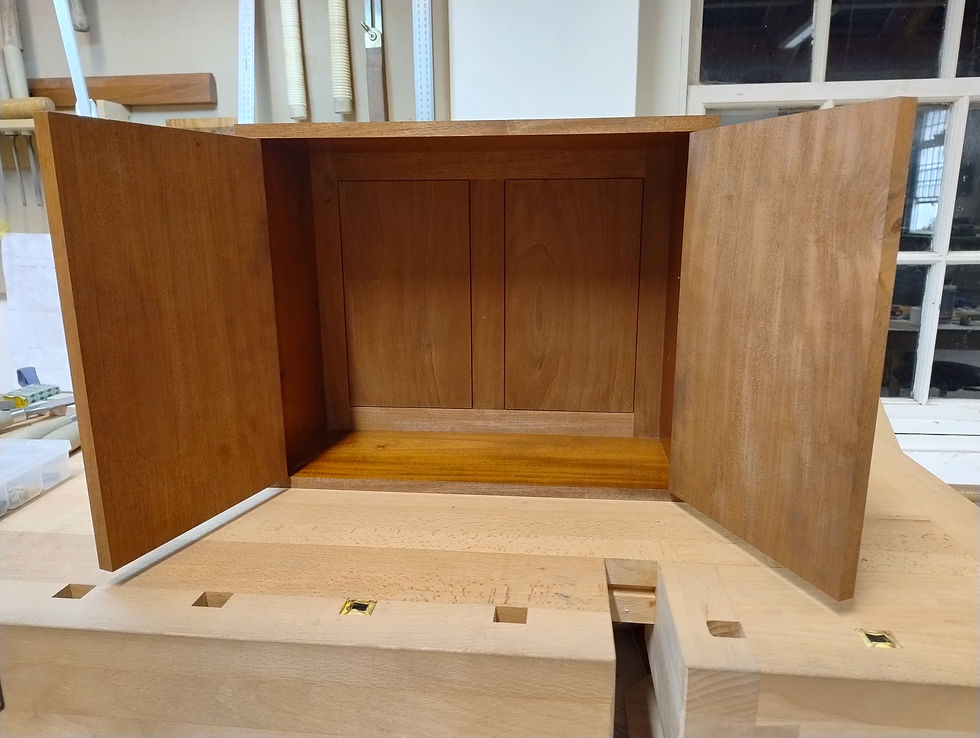Small cabinet
- Kelvin Dougherty
- Aug 31, 2024
- 2 min read
This project was to demonstrate skills in mortise and tenon panel fitting and door fitting. I was looking at traditional veneering techniques. This would involve laying veneers by hand using hot animal glue onto the constructed carcass, rather than the individual components.

The carcass is made from reclaimed mahogany, planed and thicknessed to size by machine. I chose traditional dove tail joints for strength to join the cabinet together. The back frame, panel and doors are also solid mahogany.

The veneering of the carcass was all done by hand using traditional veneer hammer technique with animal glue. There is no machine- pressing involved. I chose to use burl walnut veneer because the cabinet was quite a simple box shape. The point of this project for me aesthetically was to develop my skills in traditional veneering and let the striking burl walnut do the talking.

The front of the doors are book matched. The insides of the doors are veneered with santos, which is a modern substitute for rosewood. The inside of the cabinet is not balance-veneered due to the strength of the glued structure. The cabinet is french polished.

With this piece, I was trying to use as many traditional techniques as possible to develop my skills. With hindsight, I feel I could've been more economical with the materials used. I learnt about the pros and cons with using traditional methods and materials compared to more modern techniques and approaches. By the time I finished it I was a different maker in terms of my attitude towards materials and timescale of a a project build. I was captivated by the traditional hand veneering process and would enjoy putting this skill to use again on future projects.





Comments